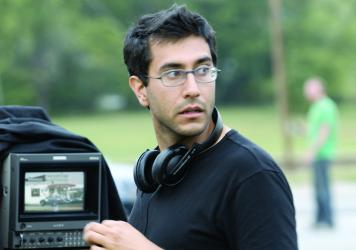Ramin Bahrani is the director of such films as Man Push Cart, Chop Shop and the new Goodbye Solo. He was named, somewhat controversially, as being on the vanguard of the “neo-neo realism” by A.O. Scott in the New York Times and called “the new great American director” by Roger Ebert. Colin Marshall originally conducted this conversation on the public radio show and podcast The Marketplace of Ideas.  I’ve been reading Roger Ebert for over ten years, and I’ve never seen him praise someone as much as he praises you. He’s given your films four stars, he’s put Chop Shop on his list of “the great movies”, he had this wonderful blog post about you. How must this feel, to get such accolades from a man like Ebert?
I’ve been reading Roger Ebert for over ten years, and I’ve never seen him praise someone as much as he praises you. He’s given your films four stars, he’s put Chop Shop on his list of “the great movies”, he had this wonderful blog post about you. How must this feel, to get such accolades from a man like Ebert?
It’s very humbling, and I’m very grateful because Roger Ebert is a legendary critic, known as the most important in America for decades. I’d like to stress that it’s not just me; he’s said this about a handful of other important directors that I really learned a lot from, like Martin Scorsese, and that makes it all the more wonderful a feeling. Watching Mean Streets as a teenager was one of the most important cinematic moments of my life. It really got me interested in making movies, and what kind of movies, and how to make them. Roger has the ability to write about films in a profound way anyone could understand, and that’s a rare gift. I really appreciate all that he’s done for my films.
It must also feel, just looking at this from the outside, that there’s a little bit of a – maybe a lot of an – “upping the ante” feel to it. Is there an anxiety-inducing side to this?
It’s natural for any artist, when the work seems to be catching on and people are paying attention and enjoying it, that there’s always some kind of an anxiety. You want to make sure the next one is good too, but when it actually comes to the nitty-gritty of doing the work or writing the script, making the film, it’s important to put those things aside. Just follow your own vision and do your best to make a film you believe in, that you believe an audience could enjoy and appreciate and understand and be challenged by. That’s what I’m working on now. I’m working on a new project, and at some point you really just have to put everything aside and move forward.
It just has to be you, your collaborators, the project and nothing else in your mind?
I’m glad you mention the collaborators. That’s a big part of it: Michael Simmonds, my cinematographer, my co-writer and others, but I do think about the audience with every film. It’s incredibly important, as we’re working, to make sure: can the audience understand what’s going on? I don’t just mean plot-wise, which is critical – can the audience understand what’s going on in the story? – but if we’re going after certain emotions, or if we’re going after certain ideas or certain questions, do we think the audience can understand those? Increasingly, what’s been on my mind with each film, Chop Shop and Goodbye Solo even more: would an audience be engaged by the story? Not just wonderful people like you who love movies and are cinephiles, but I honestly. and my collaborators also, we think about our moms, our brothers. People who like good movies but aren’t necessarily cinephiles. Could they enjoy the movie also?
My cousin Maxo has died. The house that I called home during my visits to Haiti collapsed on top of him.
